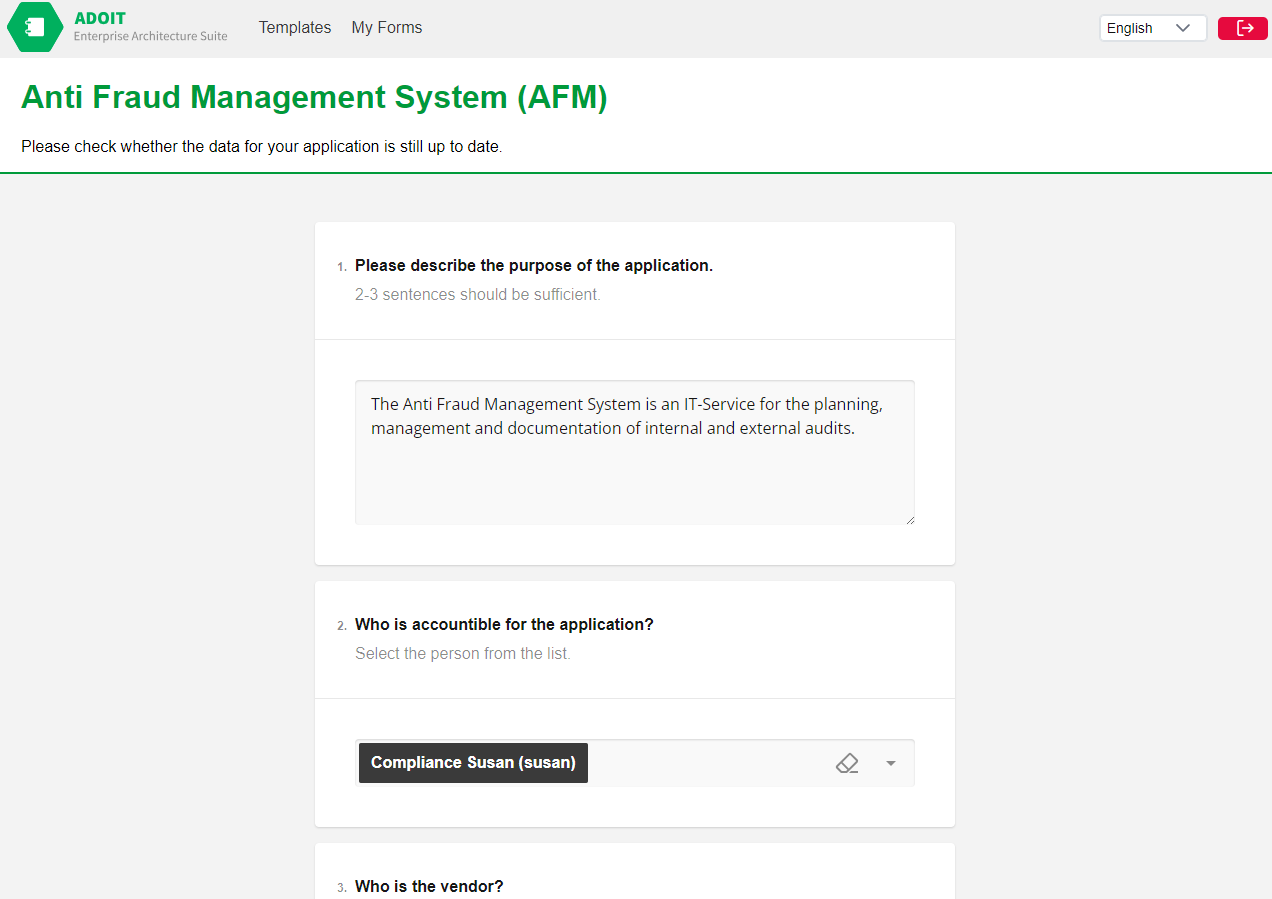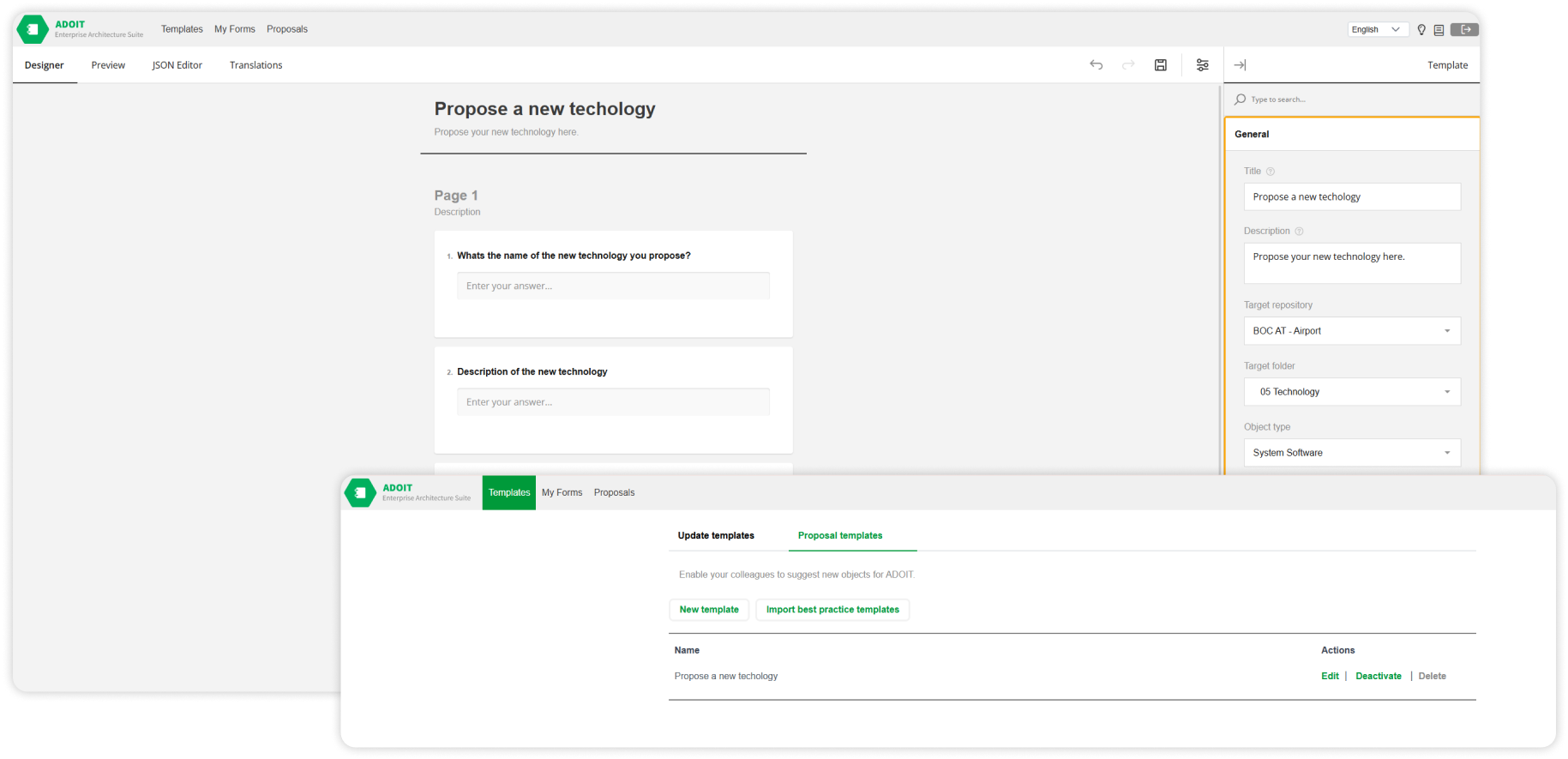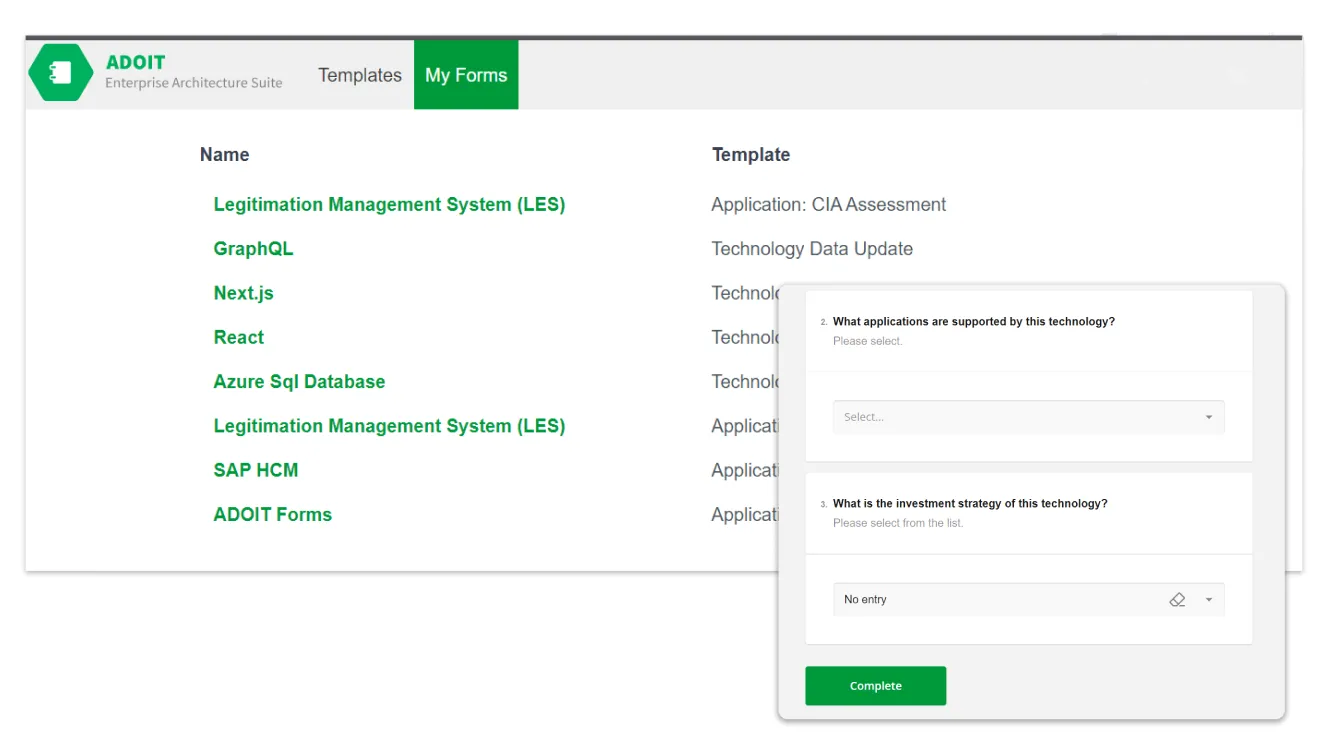Found this helpful? Share it with peers.
Introduction
EA data collection should be straightforward, but in many organizations it’s slow, inconsistent, and difficult to govern. Inputs arrive incomplete, follow different formats, or depend too much on manual effort — and the EA repository ends up suffering as a result.
When architects can’t rely on the information behind their models, decision-making slows down and alignment across teams becomes harder.
In this blog, we explore why EA data collection often breaks down and how ADOIT Forms provides a structured and intuitive way to gather accurate, consistent, and governed architecture data across the organization.
Why EA Data Collection Often Fails
Effective Enterprise Architecture depends on high-quality information. But several recurring obstacles make that difficult to achieve in practice.
Data Silos
Architecture-relevant information is scattered across multiple tools and teams. This fragmentation leads to incomplete views, duplicated entries, and misaligned updates.
Low Engagement from Stakeholders
Most contributors are not EA experts. If the tooling feels too technical or unfamiliar, people hesitate to provide the updates architects need. As a result, crucial information never reaches the repository.
Lack of Traceability
In federated or large environments, it’s often unclear who changed what, when, and why. Without proper auditability, governance becomes reactive and error-prone.
These pain points make EA data collection slow, inconsistent, and difficult to govern — especially as the organization grows.
Hint: Learn more about Data-Driven Enterprise Architecture in our blog.
How ADOIT Forms Solves EA Data Collection Challenges
ADOIT Forms introduces a more structured and intuitive approach to gathering architecture data, making it easier for teams to contribute while ensuring full alignment with the central EA model.
User-Friendly Interface for Everyone
Traditional EA tools can feel complex to non-architects. ADOIT Forms simplifies the experience with a familiar, form-based interface that anyone can use — business managers, application owners, IT specialists, or external contributors.
This means:
-
No ArchiMate or modeling knowledge needed
-
Stakeholders can submit updates quickly and confidently
-
Data flows into EA without bottlenecks
Whether it’s a capability owner updating business information or an application manager sharing lifecycle details, ADOIT Forms ensures the right data reaches the repository in a structured, controlled way.
Example of a form created in ADOIT
Automatic Syncing with the EA Repository
Every submission made through ADOIT Forms is automatically synced with the central ADOIT repository. This guarantees that:
-
All changes are reflected immediately
-
No manual reentry or syncing is required
-
The EA landscape remains accurate and up to date
Behind the scenes, ADOIT ensures full compliance with the ArchiMate standard and the internal data model. Users don’t see the complexity; object types, relationships, and attributes are handled in the background to maintain consistency.
Submitting architecture data with predefined form templates
Structured Templates for Consistent Input
Forms can be fully customized to capture exactly the data you need — nothing more, nothing less.
This ensures:
-
Standardized input across teams
-
Higher data quality
-
Fewer governance issues caused by missing or mismatched information
Fostering Collaboration Without Sacrificing Control
One of the great challenges in EA is striking the right balance between openness and oversight. You want wide participation, but not at the cost of losing control over data quality.
ADOIT Forms helps solve this by creating controlled, structured pathways for data input. Stakeholders can contribute relevant data directly while the architecture team retains full oversight through validation, logging, and predefined form structures.
The result: more collaboration, better data quality, and no compromise on governance.
Creating a new proposal using a custom form in ADOIT
Real-World Impact: Better EA Data Collection at Scale
Organizations using ADOIT Forms experience a tangible shift in how they manage and govern architecture data. Instead of patching inconsistencies manually, teams can finally focus on using accurate information to drive decisions.
Key outcomes include:
-
More reliable and current EA repositories
-
Fewer governance violations
-
Simplified compliance through built-in traceability
-
Higher stakeholder engagement and confidence
-
Faster decision cycles supported by trustworthy architecture data
With consistent, high-quality input, the EA practice becomes more scalable, more strategic, and better aligned with the organization’s needs.
Summary
Managing EA data across diverse teams is rarely easy — but it doesn’t have to be chaotic. ADOIT Forms transforms EA data collection by making it simple for stakeholders to contribute structured, consistent, and traceable input.
This ensures that your repository remains accurate, governed, and ready to support the decisions that matter.
Request a free demo to see how ADOIT Forms helps you design custom forms, collect reliable data across the organization, and maintain a consistent and aligned EA repository.








